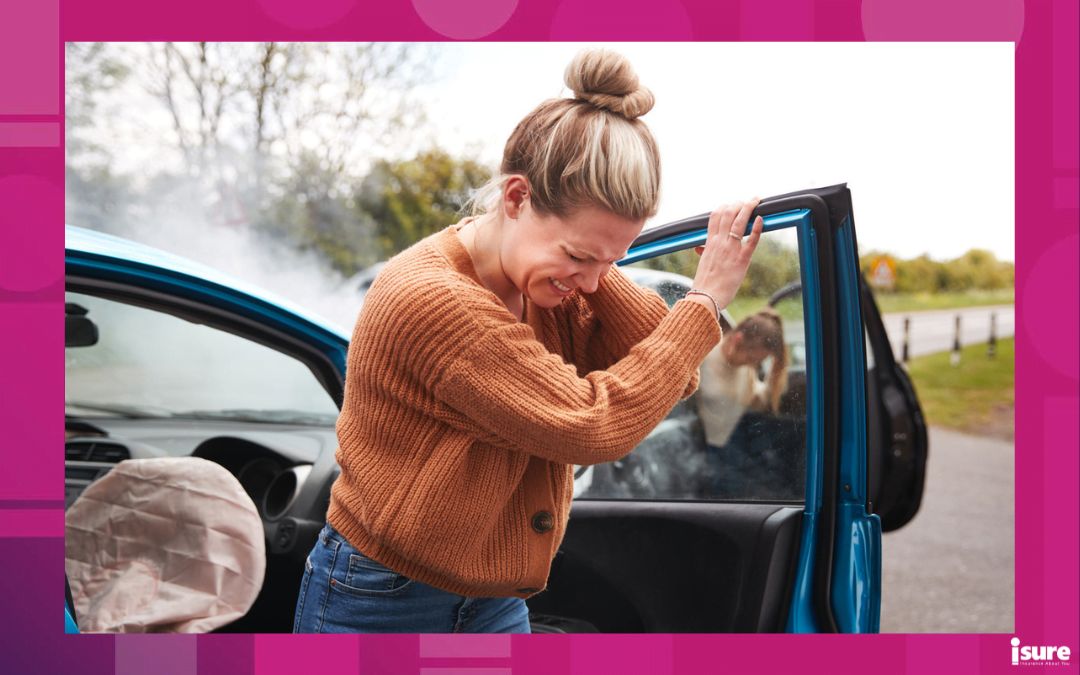Ontario is currently in a hard insurance market, meaning that car insurance rates in Ontario are at their highest. One of the reasons Ontario is in a hard market is because of car insurance fraud. People who commit car insurance fraud try to game the system with false underwriting information or staged claims and inflated payouts. Additionally, the Insurance Institute of Canada says that car insurance scams are becoming more prevalent and are a multi-billion dollar problem that drivers should be aware of. Let’s discuss the common types of car insurance fraud and scams that you should be aware of.
Common types of car insurance fraud
1. Hard fraud (pre-meditated)
Hard fraud refers to a situation in which someone plans or invents a loss for a claim payout. These crimes can result in jail time. Specific examples of hard fraud include:
Staged car insurance scams are one of the most common types of car insurance fraud. Common scenarios include:
- Rear-end collision/start and stop collision
- Sideswiping
- Wave and hit: This happens when you’re trying to merge into traffic. The dishonest driver will pretend to wave you forward and then crash into your car.
- T-bone accident scams
- When a driver plans to force another driver into a collision, and a planted witness tells police the victim is at fault.
- Making an insurance claim for an event that never happened: including collisions, vehicle theft, break-ins, etc.
Claiming the car was stolen, but this is not the case. Here’s how it’s done:
- Fraudsters sell their cars overseas: They then declare it is stolen so that their insurance company will pay for it.
- Strip their car and sell it for parts: Deeming it stolen and requesting that their insurance company pay.
- Vehicle dump: This happens when people leave their car in very remote locations and claim it was stolen.
Canadian drivers end up paying an average of $125 annually to combat car insurance fraud. Ontario drivers pay an average of $236 every year to cover the cost of insurers getting defrauded.
2. Soft fraud
Soft fraud is more common than hard fraud and involves exaggerating certain aspects of an otherwise legitimate auto insurance claim or lying when applying for a car insurance policy to get a lower rate. This type of fraud does more to increase premiums for other policyholders than hard fraud. Specific examples of soft fraud include:
- Missing drivers: When someone fails to inform his or her insurance company of all the drivers in the household.
- Over-reporting: When people inflate the value of equipment stolen with the vehicle.
- Pre-collision vehicle damage that is included in an auto insurance claim.
- Lies about location: When people use someone else’s address to register and insure their cars because they know insurance rates are lower in that area.
Other types of insurance fraud
- Car damage leading to exaggerated insurance claims: Persons submit a claim to their insurance company for the $2,500 damage to their vehicle. However, instead of repairing it, they keep the money or inflate the cost of damages ($4,000) so they can walk away with a larger payout.
- Fake injury claims: To mitigate the risk of being a victim of a fake injury claim, it is always best to file a police report. If the car insurance scam artist is overstating the injury sustained, but the police report shows very little to no damage to the car, the insurance company will cross-compare the claim versus the police report to determine a fair payout.
- Faulty airbag replacement: This car repair scam happens when mechanics don’t replace the airbag after an accident. According to the National Insurance Crime Bureau, questionable shops may use salvaged airbags to replace a customer’s airbag. They may also affix a deployed airbag to a non-deployed steering wheel, making it look like the airbag deployed to increase the insurance claim payout.
- Additional damage is inflicted to the vehicle after a collision to increase the cost of the repairs.
- Accepting “free” health care treatment for an injury that is unrelated to a collision or not medically necessary.
- Misrepresenting information about the condition, mileage, or value of installed components of a vehicle that has been stolen.
Interested to learn more about auto insurance fraud? Click here to educate yourself.
What are the consequences of car insurance fraud?
Unfortunately, we all pay for car insurance fraud. Some consequences include:
- Increased car insurance rates: Approximately 15% of your annual premiums go towards paying for insurance fraud and scams.
- Out-of-pocket costs: You can be responsible for paying for damages, although the accident wasn’t your fault.
- Inconvenience: Being a victim of car accident scams costs you time and money.
Car insurance fraud punishments
There are three types of fraud according to the Criminal Code of Canada:
- Fraud under $5,000: Auto insurance fraud under $5,000 carries a maximum sentence of two years in jail.
- Fraudulent acts over $5,000: Car insurance fraud over $5,000 earns the convicted party a maximum of 14 years in jail.
- Committing fraud over $1 million: Auto insurance fraud over $1 million carries a minimum sentence of two years behind bars.
To learn more about the different types of insurance fraud and their consequences, please click here.
How to prevent insurance fraud after a collision
In the immediate aftermath of an accident, it’s difficult to know if you’re the newest victim of fraud. You can, however, prevent fraud by following a series of steps after any collision.
- Call 911: If you were in an accident, report it. If possible, take photos of the scene and damage to the vehicle. In the same vein, remember to also collect the other driver’s information (i.e. plate numbers, insurance information, driver’s licence, and how many people were in the car).
- Use trustworthy professionals: Go to body shops or a medical/legal professional that you know.
- Keep track of your records: Double-check all bills and statements to ensure that they’re accurate and only include the services or treatments you received.
For an in-depth rundown of what to do if you find yourself in an accident, please click here.
Take the time to report the crime
If you have witnessed or have information about insurance fraud or a potential crime, you can:
- File a report with local police and/or a provincial or territorial Crime Stoppers organization
- Make an anonymous call, 24/7, to 1-877-422-TIPS (8477)
In conclusion, at isure, we take car insurance fraud seriously. If you suspect that you’ve been a victim of fraud, contact us if you think anything is suspicious. You’ll be protecting yourself and may save someone else from becoming a victim.




